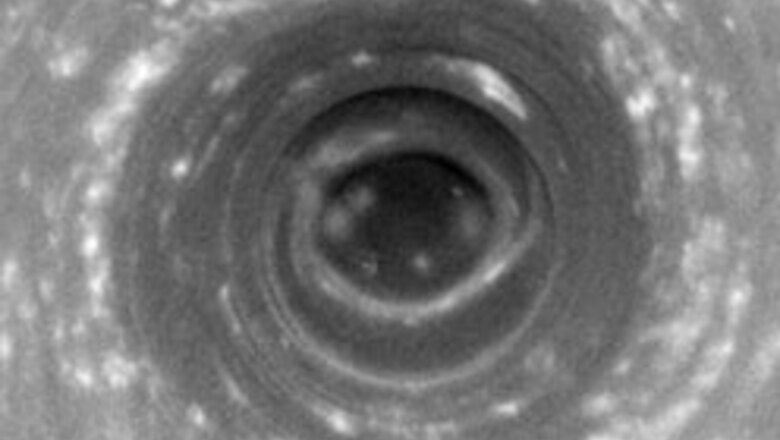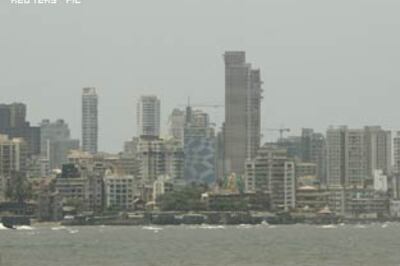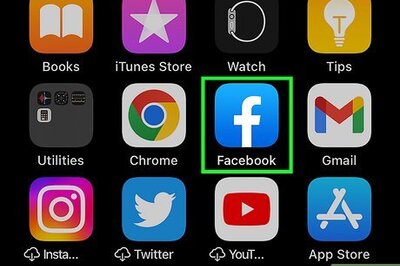
views
Washington: A colossal and swirling storm with a well-developed eye is churning at Saturn's south pole, the first time a truly hurricane-like storm has been detected on a planet other than Earth, NASA images showed on Thursday.
The storm on the giant, ringed planet is about 5,000 miles wide, measuring roughly two-thirds the diameter of Earth, with winds howling clockwise at 350 mph (550 kph).
Jupiter's Great Red Spot, which swirls counterclockwise, is far bigger, but is less like a hurricane because it lacks the typical eye and eye wall.
The images - essentially a 14-frame movie - were captured over a period of three hours on October 11 by the US space agency's Cassini spacecraft as it passed about 210,000 miles from the planet as part of its exploration of Saturn and its moons.
Michael Flasar, an astrophysicist involved in the mission at NASA's Goddard Space Flight Center in Greenbelt, Maryland said that the storm looks just like water swirling down the drain in a bath tub, only on a gigantic scale.
"We've never seen anything like this before," Flasar said in an interview adding, "It's a spectacular-looking storm."
Saturn, the second-biggest planet in the solar system with an equatorial diameter of 74,000 miles and the sixth from the sun, is about 746 million miles from Earth.
Its south pole storm is much bigger than Earth hurricanes. It has a well-developed eye ringed by towering clouds that soar 20-45 miles above those in the dark center, two to five times higher than clouds in our thunderstorms and hurricanes, NASA said.
A distinguishing feature of hurricanes on Earth are the eye-wall clouds that form when moist air flows inward across an ocean surface, rising vertically and releasing a heavy rain around a circular region of descending air that represents the eye.
Scientists said it was unclear whether Saturn's storm was a water-driven system.
It differs from Earth hurricanes in part because it remains stuck at the pole rather than drifting as such storms do on this planet and because it did not form over a liquid water ocean, with Saturn being a gaseous planet, NASA said.
"It looks like a hurricane, but it doesn't behave like a hurricane," Andrew Ingersoll, a member of Cassini's imaging team at the California Institute of Technology in Pasadena, said in a statement. "Whatever it is, we're going to focus on the eye of this storm and find out why it's there."
Flasar said that scientists have more work ahead to understand the Saturn storm.
"I'm hoping that as we puzzle over it, it will become even more exciting as we start to connect the dots in our brains. But right now, the wheels are a little creaky," Flasar said.
"We're all arguing with each other about what it might or might not be,” he added.



















Comments
0 comment